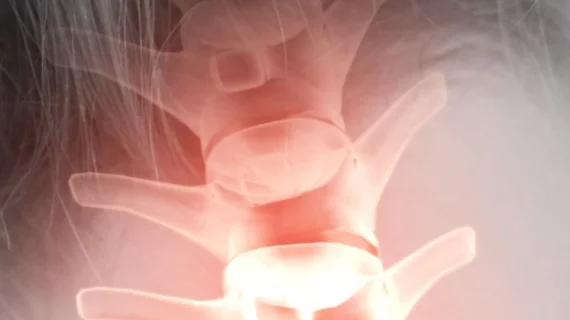Body CT adequate for diagnosing spinal fractures without dedicated spine imaging
Dedicated spine computed tomography (CT) in the acute clinical setting can be useful for catching fractures that might have been missed on an initial CT of the chest, abdomen and pelvis, according to research published in Current Problems in Diagnostic Radiology. But for the sake of time, money and resources, radiologists can expect visceral CTs to detect any injury needing surgical attention.
CT has long been considered the standard modality for diagnosing spinal fractures, first author Caitlin Hardy, MD, and co-authors wrote in the journal, and recent studies have suggested a visceral CT of the chest, abdomen and pelvis is adequate to reconstruct an image of the spine without going through the trouble of a dedicated spine CT. The American College of Radiology currently endorses the practice.
Hardy, who works with the radiology department at Cooper University Hospital in Camden, New Jersey, and her team said spinal CTs patched together from visceral CT data aren’t harmful to patients and don’t increase radiation exposure, but they do increase expenses, boost radiologists’ workloads and use up pricey resources.
“Efficient use of resources is an important goal in our evolving healthcare system,” the authors wrote. “It is not entirely clear, however, that dedicated spine CTs can be eliminated without compromising patient care.”
They said spinal fractures tend to be associated with additional injuries, the majority of which will show up on a CT of the chest, abdomen and pelvis.
“Given the well-known ‘satisfaction of search’ phenomenon, the clinical utility of a dedicated spine CT may be determined by more than just slice thickness and visibility,” the authors wrote.
Hardy et al. pulled 201 patients for their study, all of whom had been diagnosed with fractures of the thoracic or lumbar spine at Cooper University Hospital between 2010 and 2014. All participants had undergone a dedicate thoracic or lumbar spine CT within a month of their injury, in addition to having received a chest, abdomen and pelvic CT.
The patients presented with a total of 312 fractures, the authors wrote. Eighteen percent of patients had at least one fracture missed on their initial visceral CT, meaning 10 percent of all fractures were missed, but Hardy and colleagues said in no case did a dedicated spine CT change a patient’s course of management.
“The benefit of a dedicated spine CT in cases where a fracture was found is not entirely clear from this study,” the authors said. “Although it is ideal for all fractures to be identified, the majority of missed fractures were located near more serious fractures and in the transverse process, where surgical intervention was not required.”
They said a larger sample size with a more extensive pool of spine CTs could be useful for expanding their research, as could including data from other institutions.
“Body CT is likely an adequate screening tool to determine the presence of any spinal fracture in a patient and for fractures requiring surgical intervention,” Hardy and her co-authors wrote. “Subsequent dedicated spine CT in these patients may reveal additional fractures, but are not likely to alter management.”

